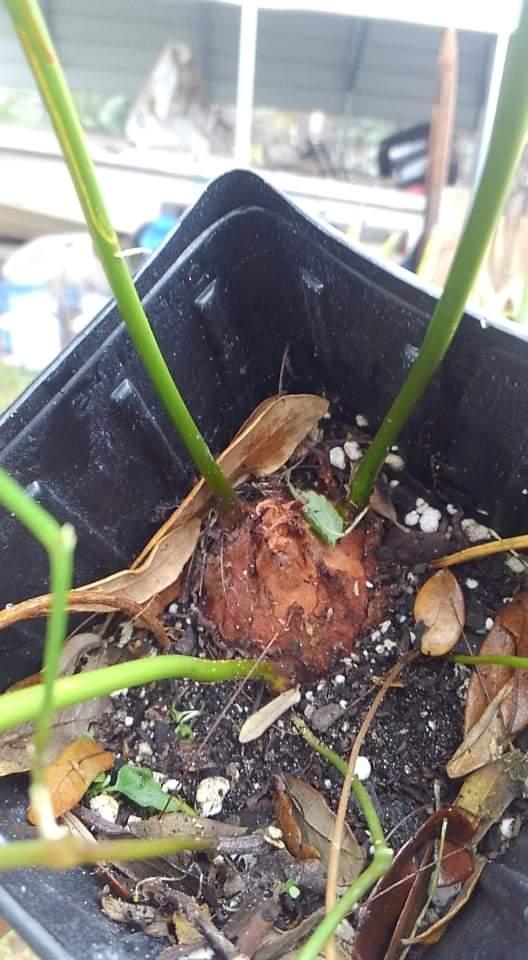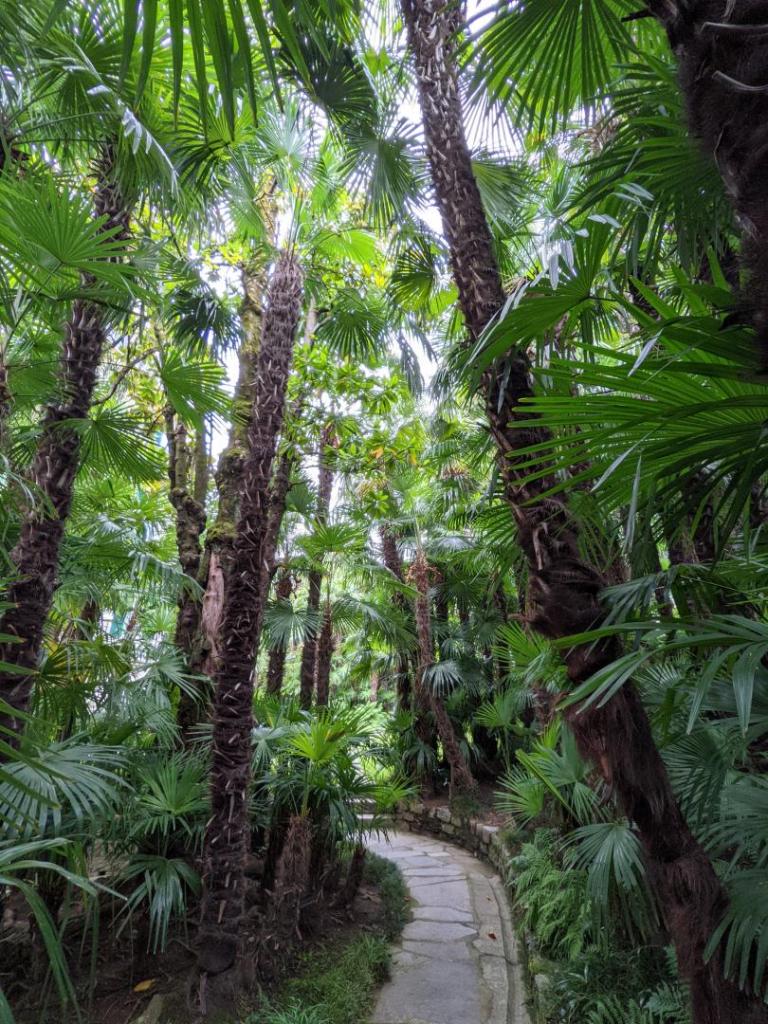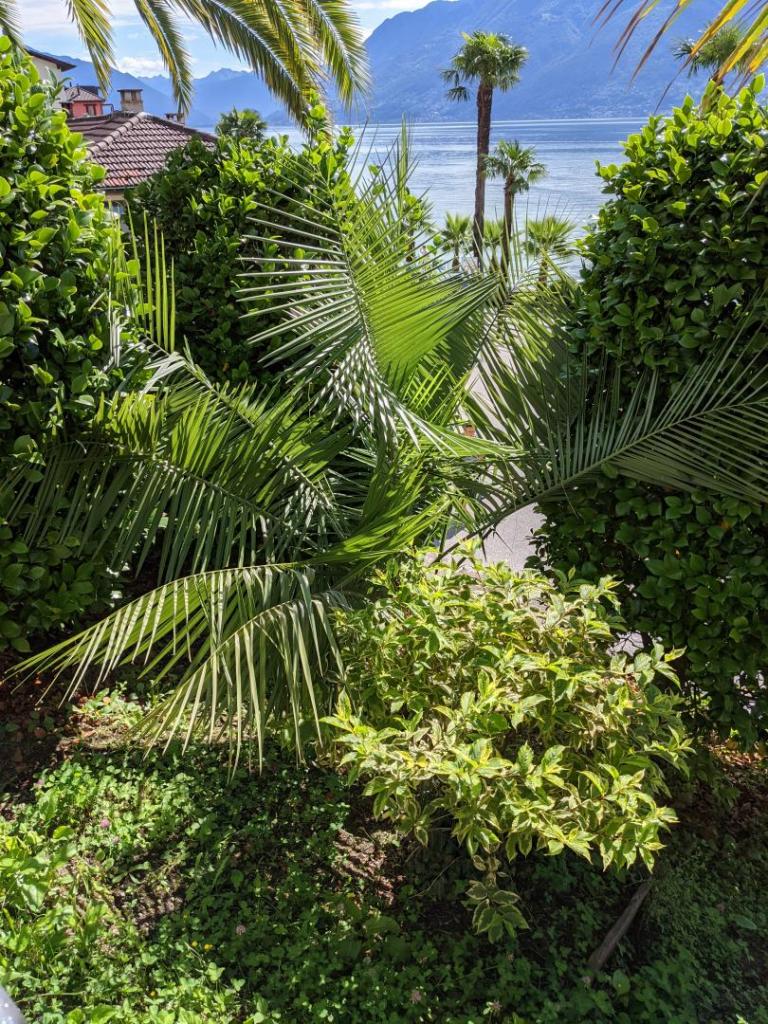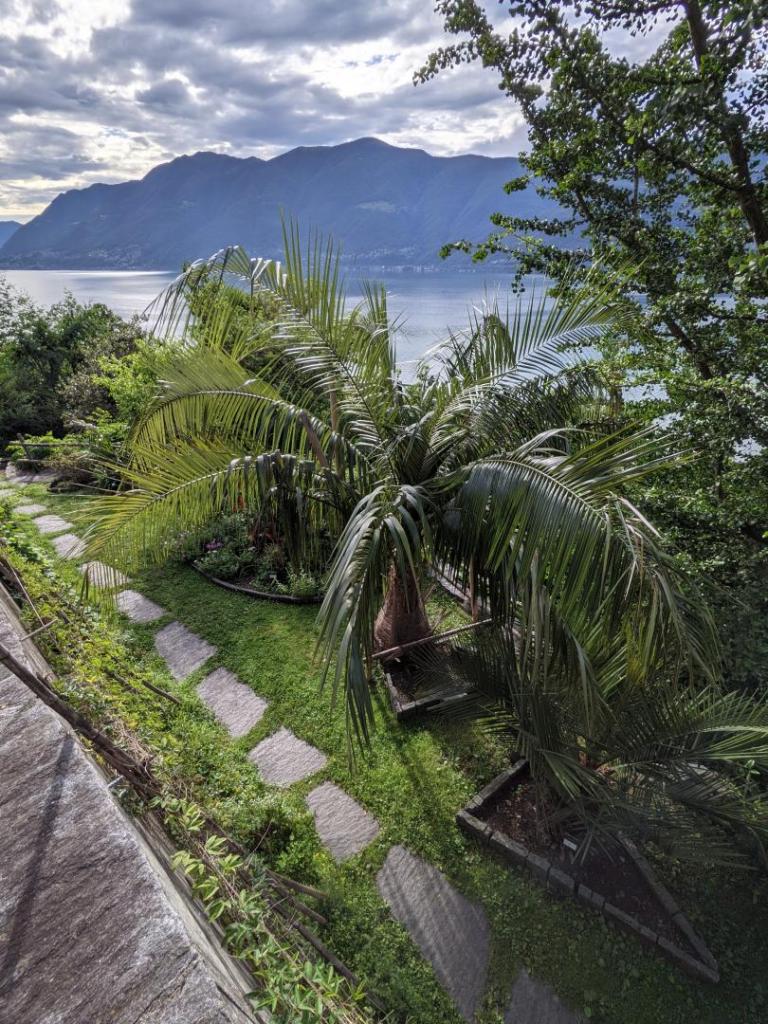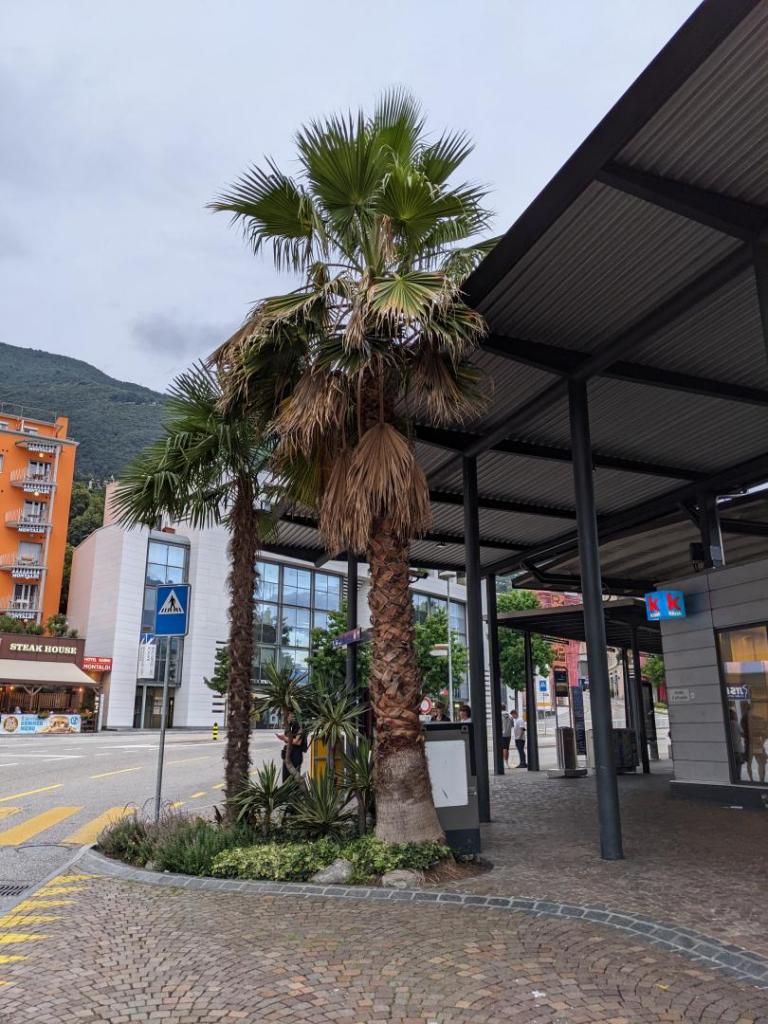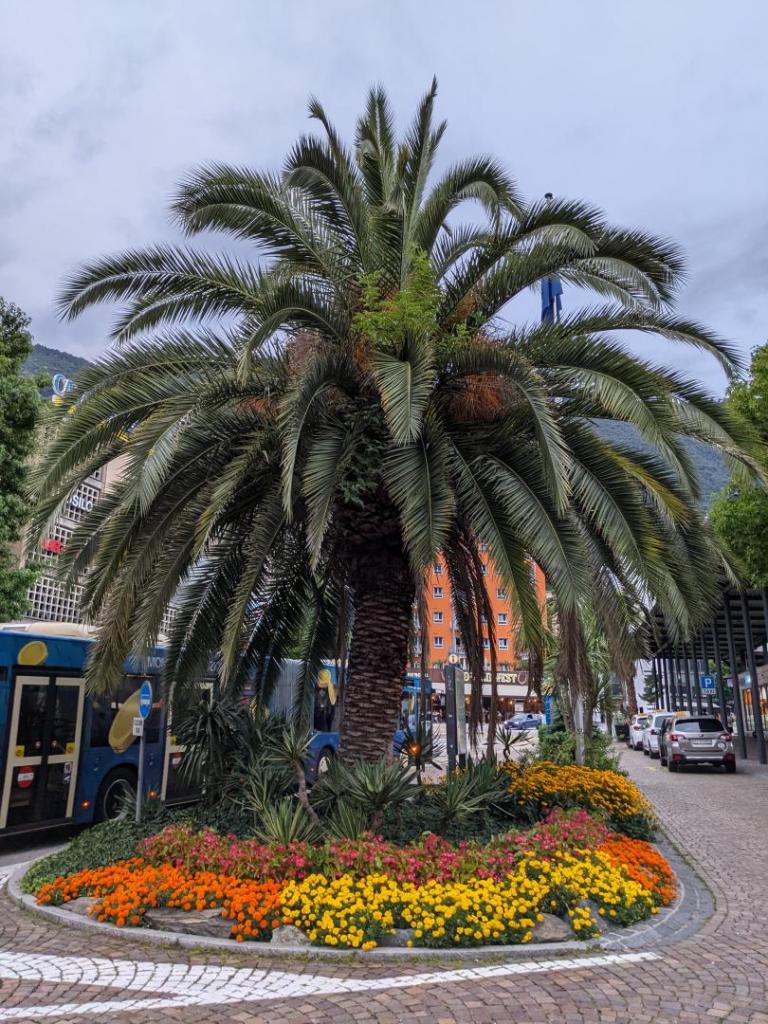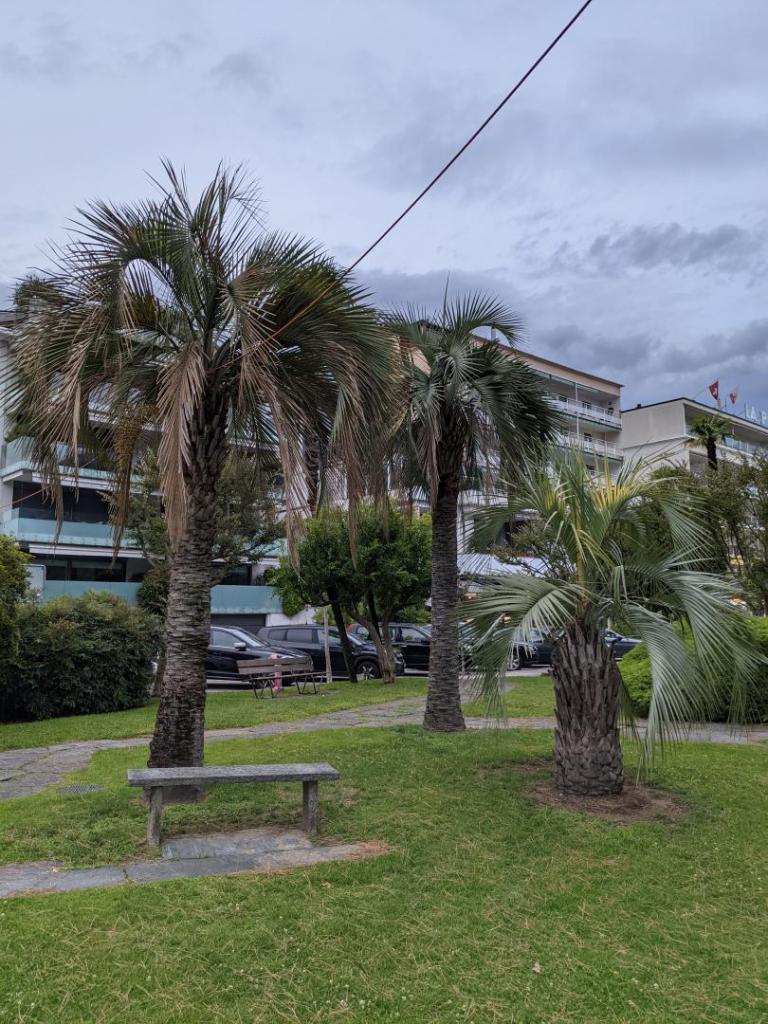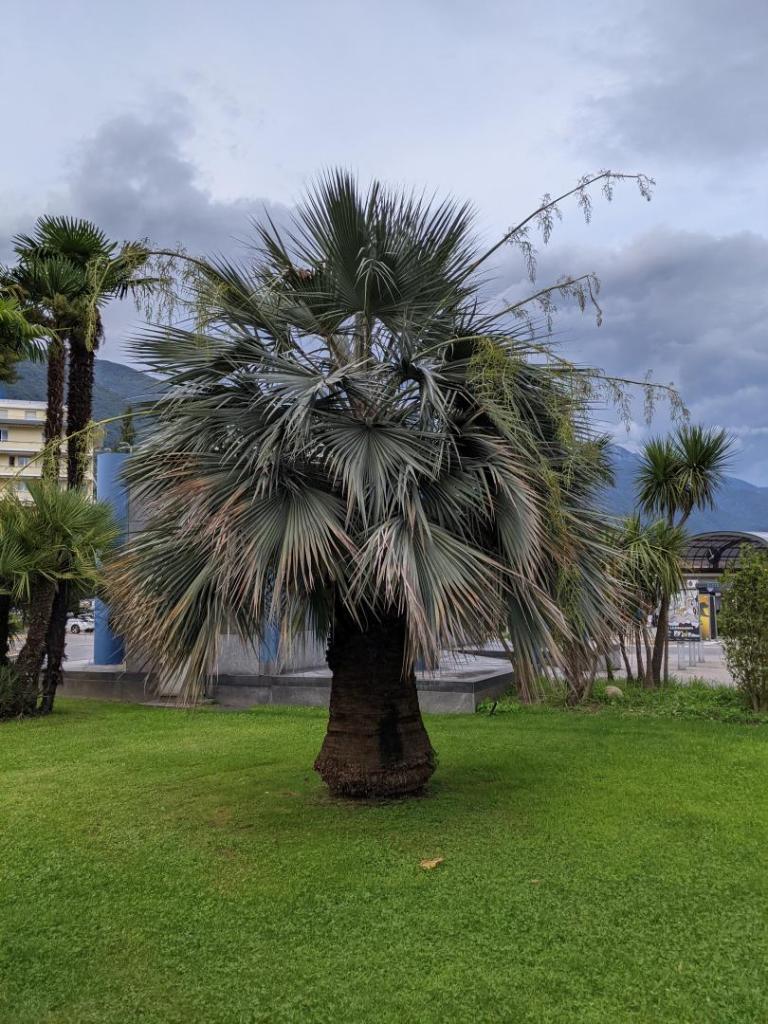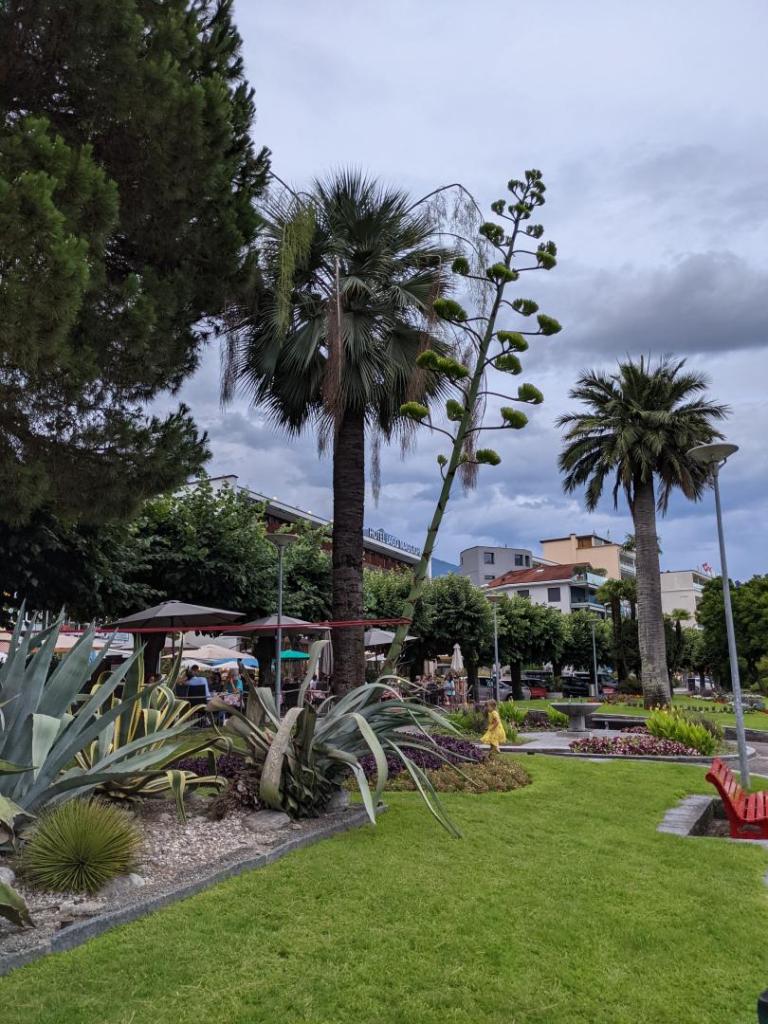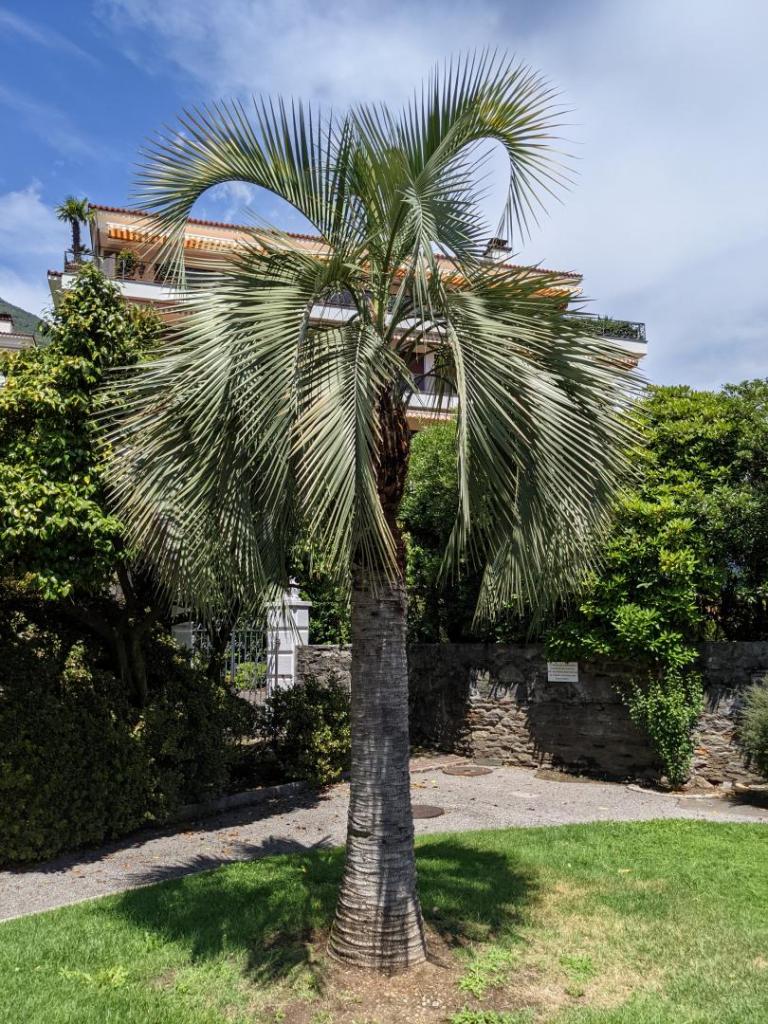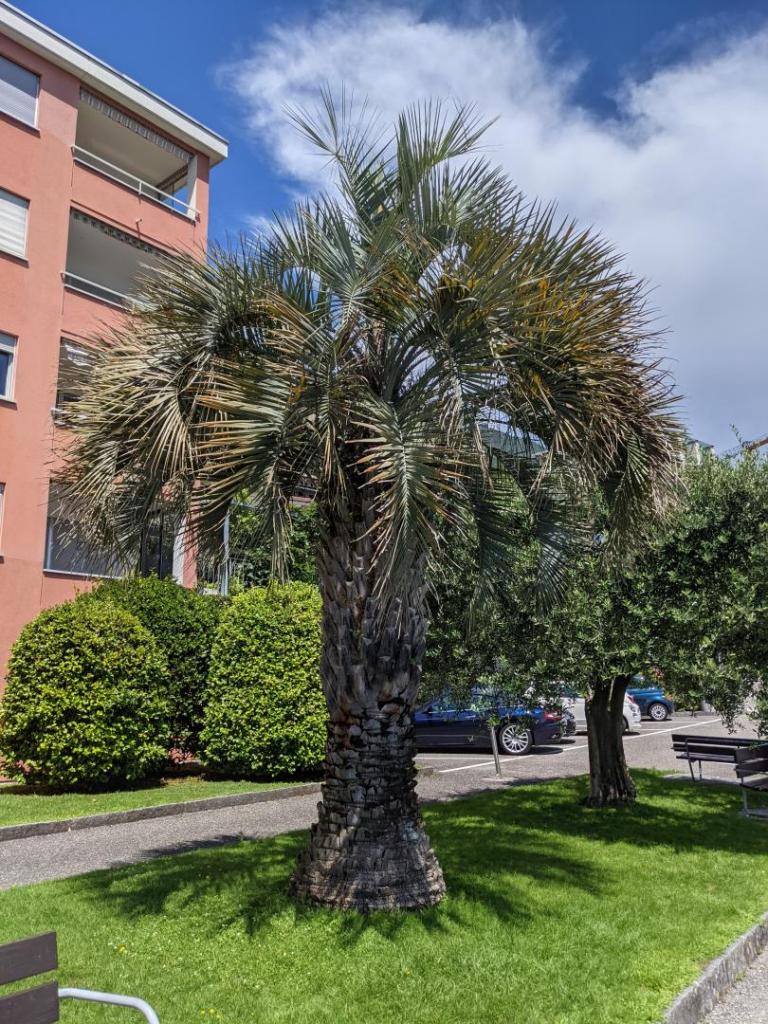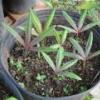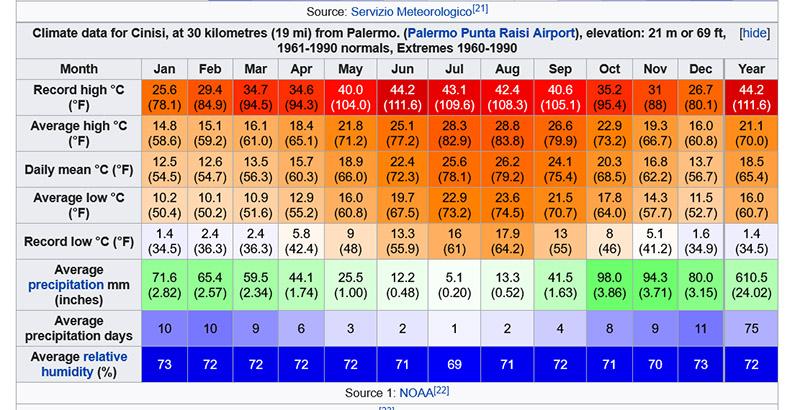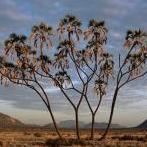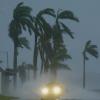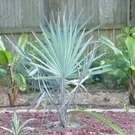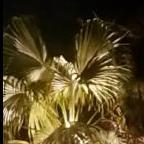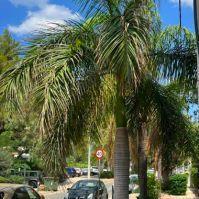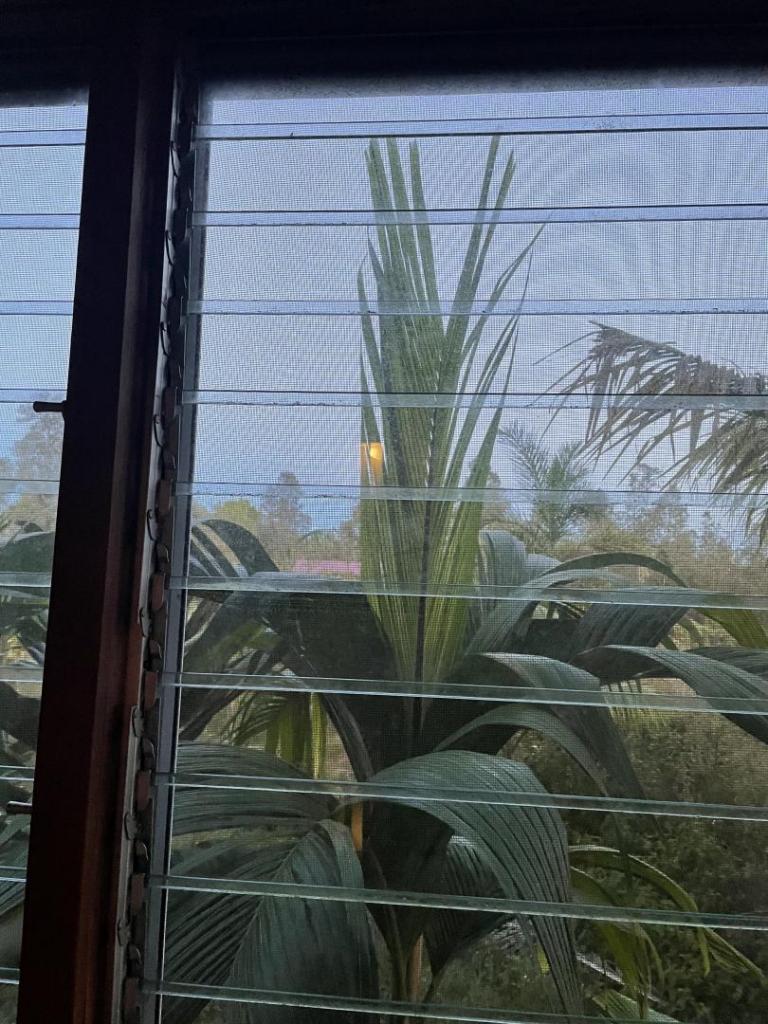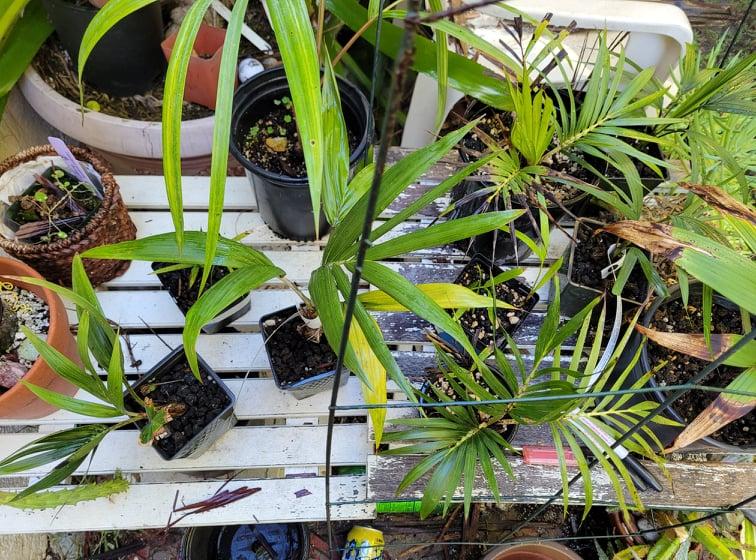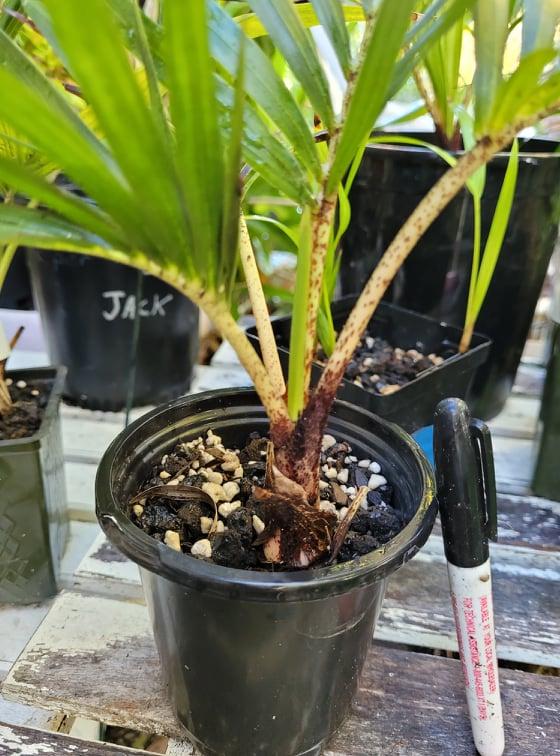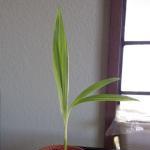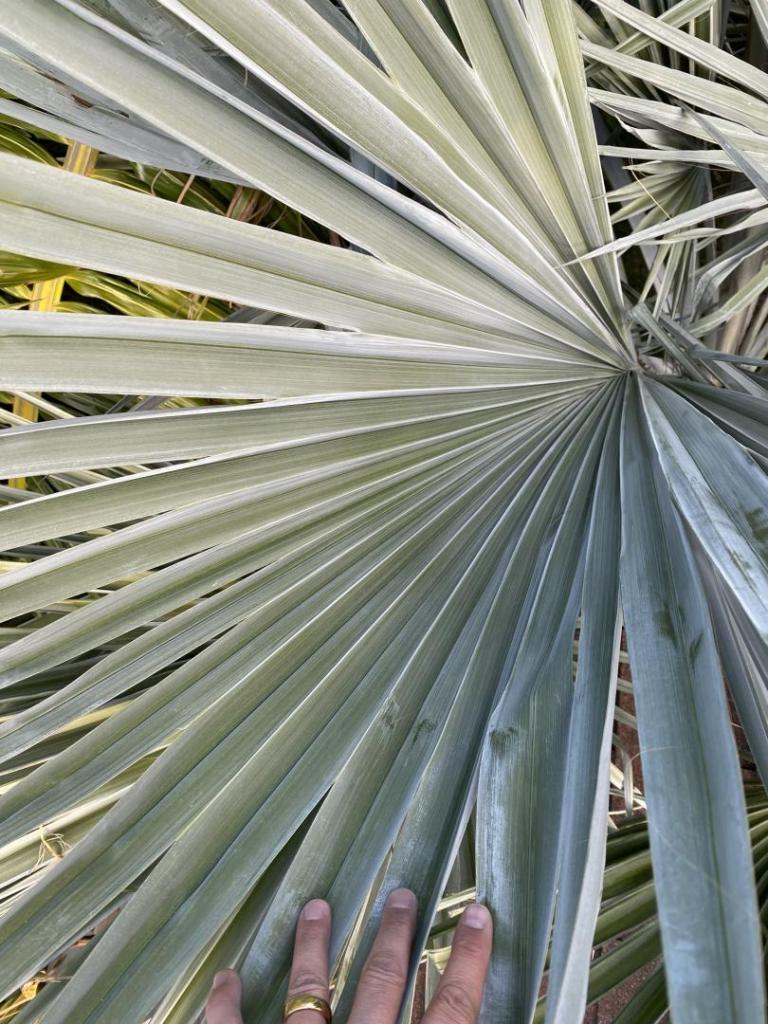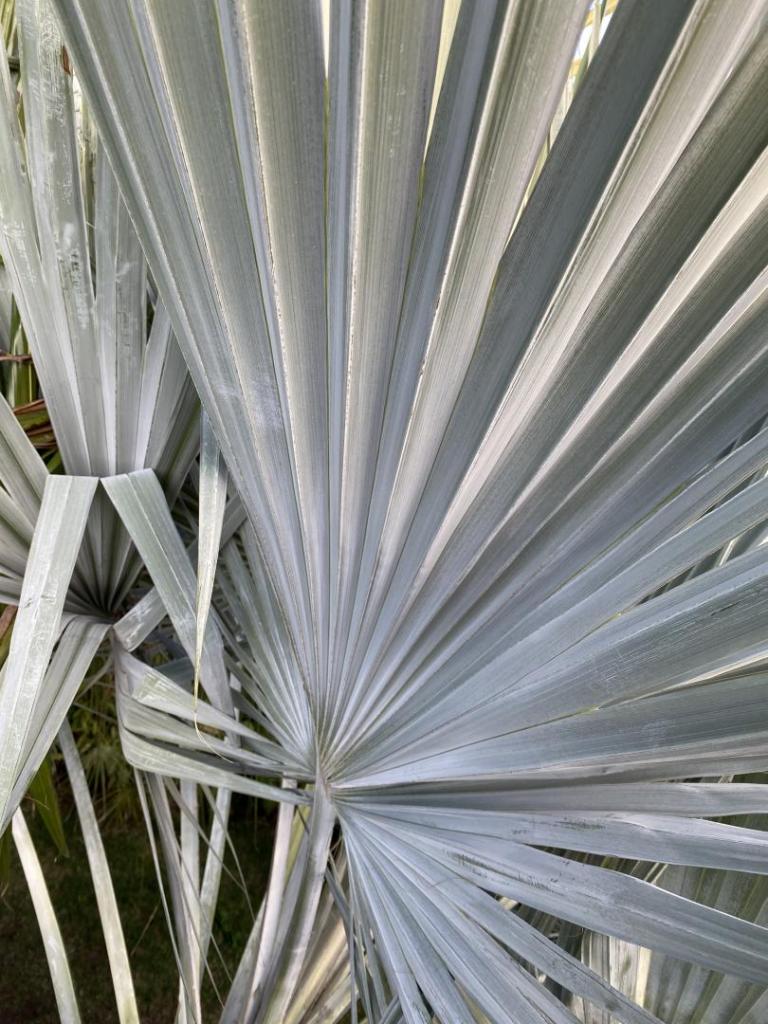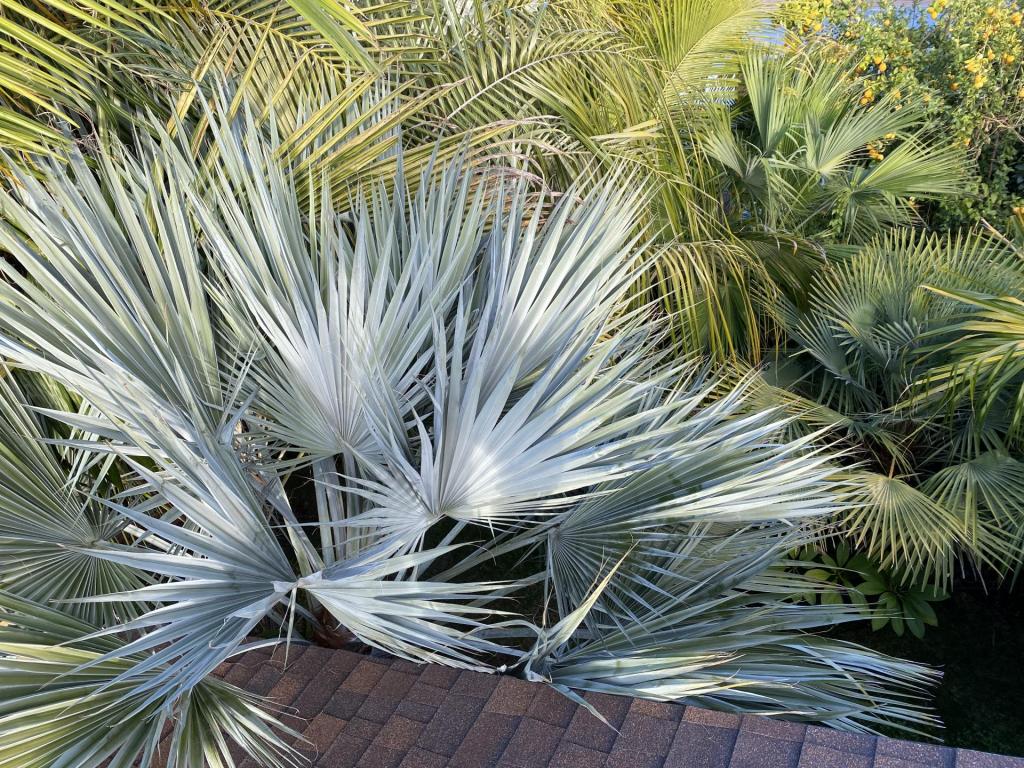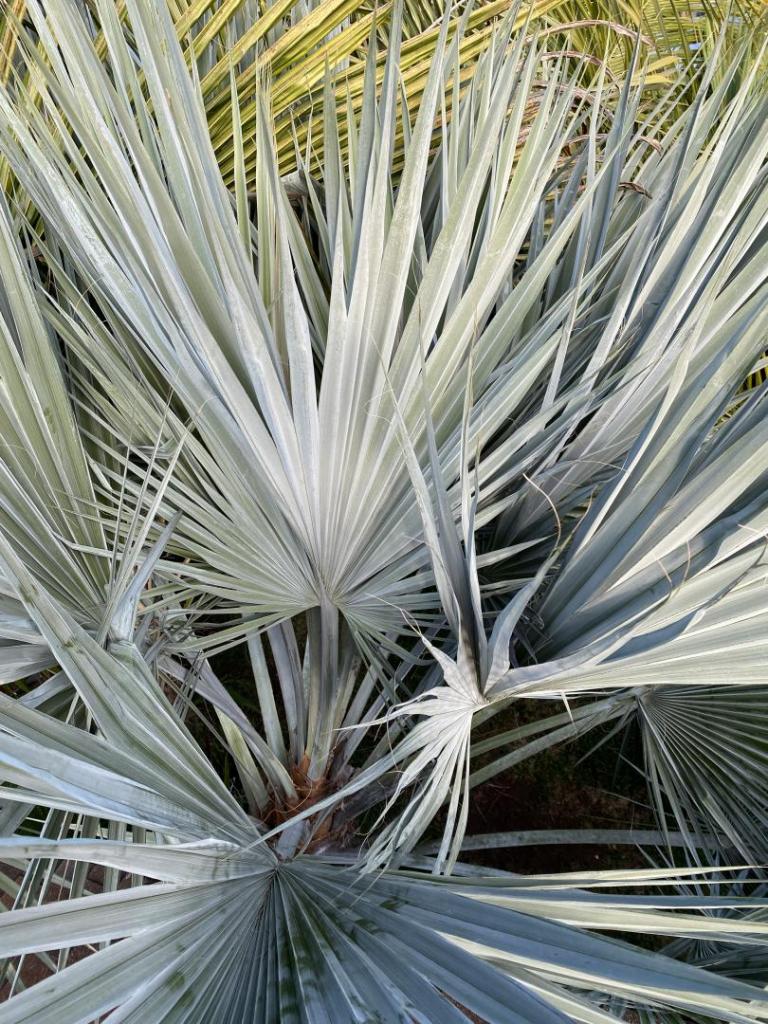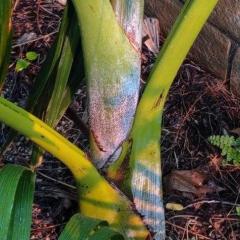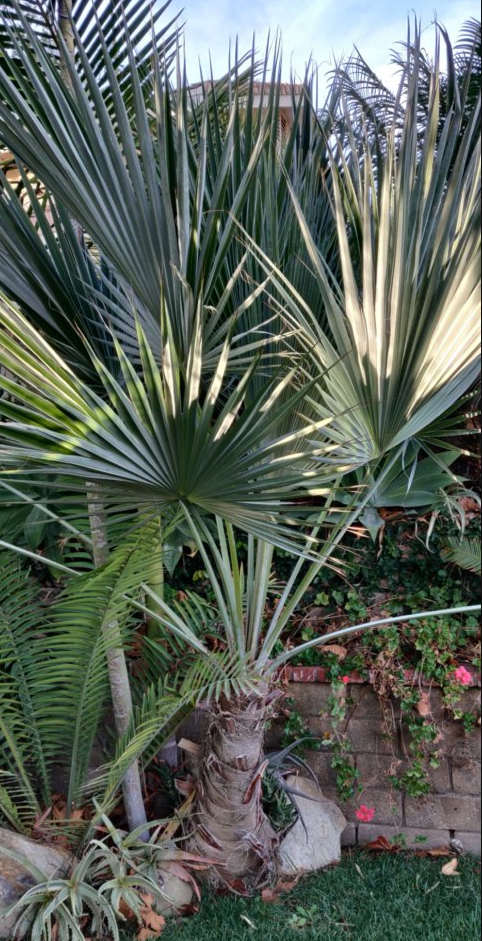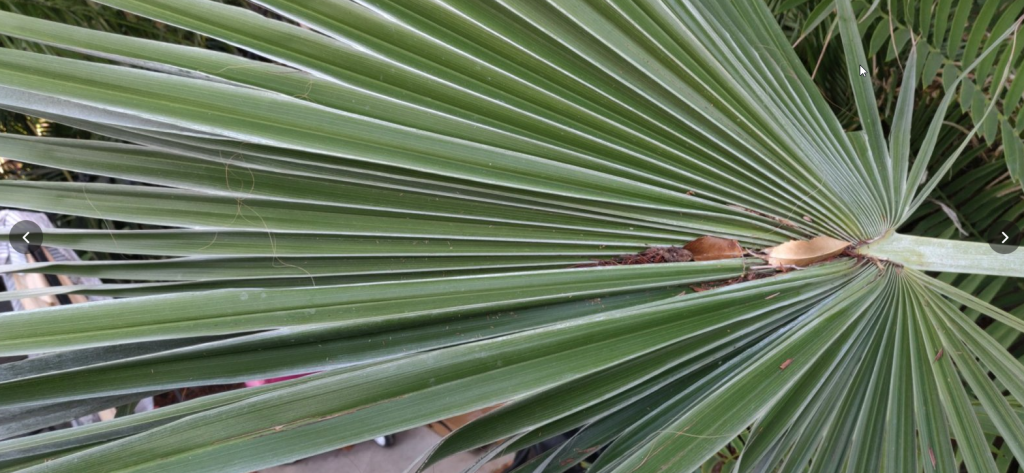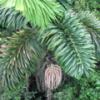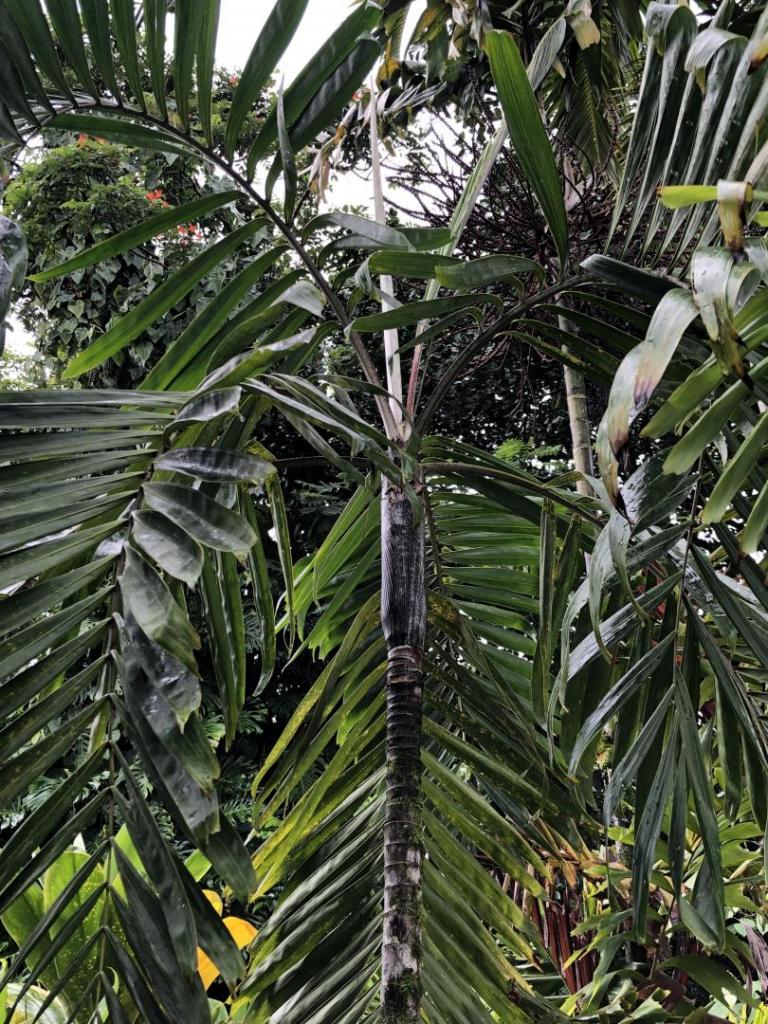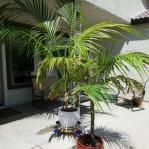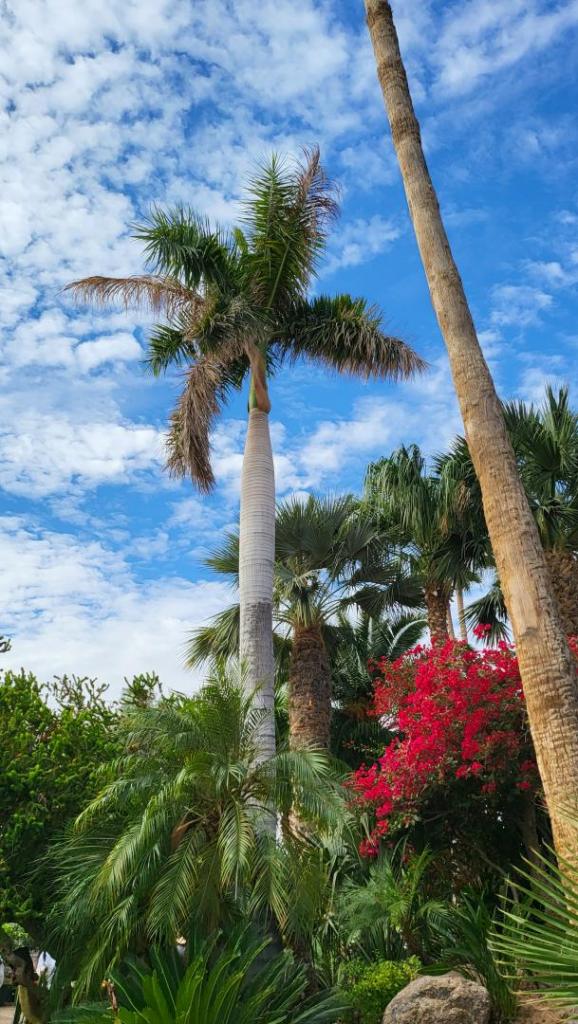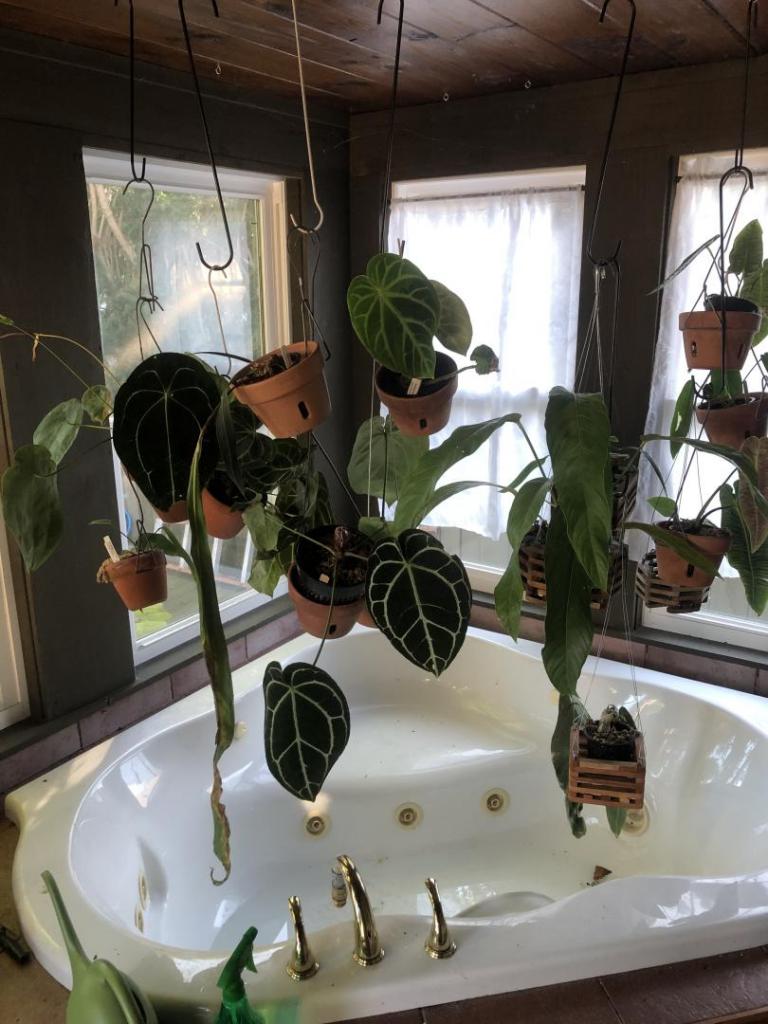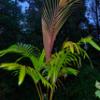Leaderboard
Popular Content
Showing content with the highest reputation on 12/17/2021 in all areas
-
Yeah, he says he has quite a few three year old plants of Taitungensis x guizhouensis. He's pretty busy with work so I'm trying to arrange a meetup after the holidays to get a bunch plants and seed from him. Below are two pics he sent me....two to three inch caudex with wide leafs with roots busting out of deep pots!3 points
-
Your place sounds awesome. I love Arbutus trees. I grew a bunch from seed that I collected last fall. They grew up slowly to 3-4" high and then just kinda stopped all summer. I also collected a bunch of seed again this year. If I ever get rich (fat chance!) I'd love to buy a piece of property on a south-facing hill that drops straight off into the Sound.3 points
-
The region around Lago Maggiore is by far the mildest place in Switzerland and milder than some areas further south. It is sheltered from cold arctic winds by the alps. Here are some more pics: Trachy forest in a hotel garden in Lugano This Washingtonia and the Phoenix were almost completely defoliated in 2012 but they grew back. Butias and Jubaeas were unharmed. Parajubaea in Brissago x Jubaea in Brissago3 points
-
Palms came today despite the chaos at the post office. Hoping someone has some insight on how large of pot I should put these liner sized hybrids in. Is 5 gal ok? Or 15, is bigger better? or should I stage up slower… I figure the less transplants the better on the plant, and it can go straight in the ground from 5 or 15 gal when ready maybe spring 2023. The roots are visible and or coming out of the bottom of all 4 liners. BJxQ BxPJT (2) Yatay x Jubaea Thanks for any tips!2 points
-
Raveneas are beautiful palms, with their emerald-green leaves, many with long, narrow leaflets and others like sambiranensis with great arching leaves. It's too bad that there is so much species confusion. The original Ravenea shown reminds me of the palms I grew from seeds sold many years ago (July 2007 and July 2008) by RPS as Ravenea lakatra. Here is a pic of the four I planted in my front yard (taken from my upper deck because of the incessant rain). (The big thing in the rear is Beccariophoenix fenestralis.)2 points
-
Yep, this plant was being sold as both- all around the same time too . Personally, I believe this is true Julietae. When reading POMs and you search up habitat pics online, you can see only Julietae compares to what we are all growing. For sure not Ravenea krociana, that is a much larger palm and grows and looks totally different. Krociana is super similar to Ravenea so. ‘Giant”. Tracy, yours is a real beauty. Nice job.2 points
-
Hi together, if you look around in Athens you'll find a couple of tropical/subtropical plants, including that Roystonea we already discussed in another thread (https://www.google.com/maps/@37.8371014,23.7702939,3a,75y,2.04h,79.69t/data=!3m6!1e1!3m4!1s2AE81-T2fClw_r4LjzcB5Q!2e0!7i13312!8i6656) or the Archotophoenix Palms planted in seaside bars. Taking the climatological data into account you will see, that it makes perfectly sense. Nearly all coastal parts of the Attica Peninsula have an optimal climate for many many palms (except of the little amounts of rain). It's just a few days during the time from December to March, that prevent the tender tropicals from being widely spread in the private gardens or public parks. Btw: The Athens Riviera is at least Zone 10a, if you take the definition in that way, that you refer the Zone to the absolute minimum temperature ever recorded (in this case -0.4°C). If you take the mean value of the absolute minimum temperatures measured of that station, it is 10b (2,5°C). There are other weather stations around, that differ only little to those values. Yes, there are recorded absolute minimum temperatures of 9B, but again, if you take the mean value of the absolute minimum temperatures of each year, these stations are 10A or 10B. A big restriction to these data is, that the values of these stations do not meet the standards to define a climate. That is just because these stations are relatively new. From the Nea Smyrni station I have the records of just 7 years. Nevertheless I assume the Athens Riviera is really 10A, considering the plants you find there and even some non-native animals from central America, central Africa and far east Asia, that live there for many years now. If I had a property there, I would just try out the wildest things, even a coconut. Just to see it myself, if it's possible or not.2 points
-
Hello, if you consider your zone 9b (as in fact it is) you can safely grow all the palm trees considered in this climatic zone, then if you have a sheltered area of the garden south facing you can try species on the edge of zone 10a. The USDA method cannot be applied to the letter for the Mediterranean areas, as has been said several times, but must be corrected to take into account the winter months with average low temperatures. For comparison these are the temperatures of the coast of Palermo:2 points
-
That’s a good one Tracey! Here’s some more Ravenea confusion: had one “julietae” already in ground, then I saw “louvelli” at Jungle Music. After a few years, it’s clear that they’re both the same palm, which is not terrible. Then Ron Lawyer sells me the “real deal louvelli” which is indeed different. I’m thinking “cool”! After which someone knowledgeable (who’s been to Madagascar) tells me that no one actually has louvelli in cultivation, that we’re all growing something else. Sigh…2 points
-
Bret, maybe we should just call it the upright, easy to grow Ravenea with dark green leaves. I'm not sure how that keys out in Latin. More importantly, I wish I knew how to get another one that actually turns out to be the same thing. This one was acquired from Phil & Jesse at Jungle Music here in Encinitas. Perhaps they know more about it's origination and sourcing additional ones. The appeal is that they seem to fit into a pretty tight footprint at least thus far and always looks great. The cycad like eruption from the ground always catches non-palm people a bit off guard as well.2 points
-
I'm on the fence with foxtails in Arizona. While I also have a large one that is flowering,I honestly can't recommend foxtails,either, as a long term grow here. Several have died around my yard over the years due to freezes,or growing into excessive sun and heat. I also grew about 20 of them up to 5/7 gallon size from seed and sold them off,but would never grow them again. They were slow growers for me in pots,but I've had a few reports from my buyers that they are still doing well in the ground for them. If you try one,east side of a house,or between houses blocking western afternoon sun would probably be best,with additional shade for the trunk from other plants if possible. ANY crownshafted palm can get trunk damage from the intense Arizona sun,so it's something to consider,and plan how you will be protecting it. aztropic Mesa,Arizona2 points
-
Waiting for a frost so I can walk around my property and find the areas of least frost and first to thaw. Should have a good selection of microclimates on our sunny 3 acres. Got a great draining, sloping, all day south facing sun with 50ft Madrone canopy over it for the Parajubaea hybrids. Have lots of palms to find a home for these next couple years to make a jungle!2 points
-
2 points
-
I put mine I got from Patrick into 3x3x14 deep pots, but one gallons should give them room to grow.2 points
-
After my appointment downtown I took some interesting pictures on my walk home. I was really surprise to see a small W. robusta and Traveler's palm. 13 photos and thats it I promise. Bananas are out in the open and look wind damaged. A few nice Windmill Palms. The washington is only 15ft. Above sea level.2 points
-
I don't know about the coconut palms, but king palms and royal palms will do fine as long as the temperature rarely drops under 28F and never under 23F. Oh, and for royals, you are going to need more water than that amount of rainfall.2 points
-
They are called "adventitious roots" and are pretty normal on Sylvesters. There's a big Sylvestris near my house that has roots coming out 2-3 feet above ground level. It's kinda crazy looking, but totally normal!2 points
-
Looks like it’s got an “everything deficiency”. The kind of plant you see on the throw-out rack at the nursery. If you want a strong plant, a do-over is in order. These are happy, but hungry palms in South Florida. But there is something rewarding about taking something like that and turning it around. I’d hit it with Palm Gain, liquid chelated iron, a Miracle Gro watering can single, water it, and move it to a not-too-sunny spot til it greens up. It will likely respond well if you can keep caring for it.2 points
-
Looking at that Trachy forest - i don't know how anyone can see that and say that Trachycarpus don't look tropical. That is a jungle!2 points
-
2 points
-
I show this palm a lot , but it is in my best microclimate so I wanted to show it again for some who might be seeing it for the first time , plus it's pertinent to this topic . That eave keeps it drier , and keeps some ice off it . In the winters when I had a Low of 4F and a 5F several years ago , it was only only partially damaged . I don't know of another one in town , and I don't think I'll find another anywhere near as healthy as this one . Full sun all day on the south side of the house . Also my biggest Chammy is to the left of the Butia . The Butia is taking it over but it is decent sized . Will2 points
-
2 points
-
I like all palms. Even the most hated ones on here are spectacular when you see a prime healthy specimen.2 points
-
Hello everyone! So as a resident of the Athens Riviera I am really puzzled about the true palm potential of south Athens! I mean even in here I have read so many misconceptions on the climate of south Athens (even from Greeks) and coupled with a widespread lack of motivated gardeners in the country that I can not really assess the true palm potential of the Athens Riviera. But I would like to start from what I think I am generally good at: climatology and meteorology. So the Athens Riviera (basically anything south of Nea Smyrni) has a semi-arid climate. Annual rainfall varies from around 330mm in Piraeus to just below 400mm in Nea Smyrni. The mean annual temperature is around 20C according to the most recent data of the past decade or so. This makes the Athens Riviera the warmest area in continental Europe annually (closely followed by Seville in Spain). Now let's talk about some major misconceptions about the winter climate in the Athens Riviera. There is a widespread belief even among Greeks that the Athens Riviera is actually colder in the winter compared to western Greece. I have even read here that some people believe cities like Pyrgos have milder winters when in fact south Athens has almost 3C or 4C higher winter mean minimum temperatures. This is obviously because of the huge Urban Heat Island Athens as a whole experiences. Also many people confuse the wonderful snowfalls of the northern suburbs of Athens with the climate in the Athens Riviera. So many are left with the impression that the Athens Riviera gets a lot of snow. While it is true that the whole of Attica is much more prone to ''prosinemos'' weather cold snaps compared to west Greece and indeed every around 15 years even the Athens Riviera sees settled snow on the streets, these instances are generally very short-lived in south Athens (1-2 days at most) compared with the rest of the city. You see Athens has one of the most complicated climates in the world! The city spans a huge area, surrounded by 5 mountains from all directions, countless hills and an altitude ranging from 500+ meters in the extreme north suburbs to 0 meters in the Athens Riviera. It is obvious that you will see huge climatological differences between different Athenian suburbs. And that's where the confusion sets in. Below you can find the most recent met data from Nea Smyrni which is the warmest met station in Athens according to the data from the National Observatory of Athens. I chose this station in order to explore the extreme boundaries of what can actually grow in south Athens! The absolute minimum temperature in the Nea Smyrni NOA station is -0.4C and the average of absolute minimum temperatures is +2.0C which makes the area a 10b zone if my calculations are correct! So could cocos survive in very sheltered areas of the Athens Riviera? Can Royal, or King palm trees survive in the long run? The Athens Riviera in the past was full and I mean full of palm trees but as the years passed populations have dwindled, even though some areas still remain very palmy....But my question to people who are more experienced is what do you think of the true palm potential of the Athens Riviera? How much can we push the boundaries here?1 point
-
Although they're Asian in origin, camellias sure do like it here. Their slow growth rate, suitability to shade and resistance to pests make them a surprising (for something so beautiful) maintenance-free shrub. When I first moved to this house, there were already about a dozen mature camellias scattered about, their cultivar names long forgotten. Neglected for years, they were a tangle of smilax vine, camphor tree and Virginia creeper. With a big old live oak above and an understory of Sabal minor, they make an elegant privacy screen across the back property line. One day when I was working out in the garden, a neighbor passed and commented on her favorite, this one: It's my favorite, too. An old trick I learned to compensate for camellia's lack of fragrance is to plant Osmanthus fragrans in the vicinity for a more rounded sensory experience. People who aren't paying close attention just assume those camellias smell terrific. It's a benign deception. If your camellias have begun to bloom, please share!1 point
-
1 point
-
1 point
-
We’re at like 6 straight frosts since this happened - which is exceedingly unusual for us. Last year we hit <30 probably 30+ times, but only ever had two frosts. We keep hovering around 30 or just above, but getting frost every morning! Highly interesting to me.1 point
-
Further complicating things, I suspect that we are all a long way off from having something that will push out any sort of inflorescence for help in identification. Does anyone know if the genus has a tendency to hybridize? If they are like some of the other dioecious genra like Phoenix, which are very prone to hybridize, that would further complicate things in getting seed from non-habitat. I'm not familiar with any crosses from the more common species like rivularis and glauca which would be an argument that they aren't prone to hybridization.1 point
-
Have been to Switzerland many times - for skiing, too (Jungrau-region spectacular) - and was aware of some warmer pockets but this... is almost unreal... (no doubting the origin of this image at all!!) However, great documentation - next time I hope to see those Jubeas by myself! regards Lars1 point
-
I was just at a friends place and he was showing me both of his ravenea julietae and they both looked similar but you could tell they were different. There are not so many people running out to study ravenea species and may not know which one is true for a long time. Ravenea is an under rated in my opinion, some get massive1 point
-
Not sure on shallow roots for palms, as I've only really been focused on growing them for the last five years or so. However in this time I've noted that regardless of the size of the container, 1 gallon to 25 gallon, the palm always seems to eventually have roots growing out the bottom. I also know when I transplanted two Butia over the summer the roots went much deeper than my yen inch saw all blade. I've also seen where some palms languish in too big of a pot whereas others explode, so dunno.1 point
-
1 point
-
They probably would, but I wouldn’t sweat about it too much if it’s going in the ground relatively soon. I’m excited to see how the BxPJT does for you! Kinda want one now…1 point
-
1 point
-
I got that statue some 20 years ago for $79.00/ three years later it was double that price.1 point
-
The streaky spots in the above photo look like they could be sunburn. I've had this on some palms that were suddenly exposed to more sun. If the frond grew in a nursery under shade cloth it was used to partial shade. Then suddenly going into full PM sun can burn fronds. There isn't anything that can "cure" that frond, but new ones should grow out sun-adapted and won't burn. Archontophoenix Cunninghamiana (Bangalow Palm) is known as being somewhat sun-tender when they are young. You could move it back from the edge so it gets a little bit less direct PM sun, but it should adapt.1 point
-
1 point
-
1 point
-
yeah lawn lime has 10:1 CA:Mg, this is pushes the plant towards Mg deficiency as Ca competes. Proper ratio for palms is 3:1, though some palms are notably more resistant than others to this kid of deficiency, though cuban copernicias are among the more sensitive to deficiencies. Your natural rocky limestone soil in miami has a great mix of Ca:Mg I understand.1 point
-
1 point
-
Since the AZ Capitol Royal has died, I thought I would head out to Treeland in Mesa and check on that one since it's probably the last one in the Phoenix area not in a private garden (or at least publicly accessible). I'm pleased to report it is still standing. It looks a little ragged but still magnificent.1 point
-
Temps are dipping to the low 50s F. for next few nights here in New England. Fantastic weather for humans daily highs/lows of 72 / 52 degrees F. However, I’m thinking it’s getting too chilly for my anthuriums at night so i brought them indoors today and they have taken over one of the sunrooms. Additionally, I got irritated with insects outdoors eating the young foliage, ruining the symmetry of the beautiful developing foliage- so, another reason to bring them indoors. This sunroom has a jacuzzi-type tub that we never use. If I keep a few inches of water in the tub below it has been keeping humidity above 60% and the room temperatures stay 60 - 80 degrees F. in this sunroom year round. Lower humidity levels occur once the heating goes on in the cold months. Added some sheer curtains to filter the afternoon sun.1 point
-
Dypsis are gross and sound like a childish insult Livistona is just an upside down Washingtonia Cyrtostachys renda...whats wrong? cant handle a little bit of cold... Chambeyronia is like a king palm that craves attention every few months Coconuts are so lame that they have to give you free food just to make friends Rhapis I think the name says it all Mauritia flexuosa needs to stop acting like it has a crownshaft Tahina "oh look at me I got big leaves"... blah blah blah Chamaedorea, being small doesn't make you cute Syagrus looks like a fluffy Coconut Hyphaene cant figure our which way to even grow Bismarckia nobilis Pffffff... noble my butt, your a fat Brahea armata and everyone knows it. the list goes on and on...1 point
-
Not a fan of Arenga engleri, at least the specimens I have seen. They look like a tangled up mess to me, but I suppose I should prepare to eat my words should someone post a photo of their very beautiful, healthy plant. I'm not growing it. Of all the palms I AM growing, I'd give up my Phoenix roebelenii in a heartbeat, though I am putting strings of lights up their trunks today.1 point
-
THIS! I really wanted to troll it too, but alas I will not. Could have been worded a lot different though. I cant help either since I'm in Florida. Oh well, at least there is some entertainment value here.1 point
-
Thats a good problem to have. Pot the suckers up and sell them. They're worth a ton over here.1 point
-
Worst palm species sounds like one those questions for which any answer gives another turn of The Rack.1 point
-
If you’re trying to keep out marauding meth heads its spininess makes it perfect.1 point
-
I couldn't agree with you more about Washingtonia. Seeing the giant 100+ year old ones in the few canyons here in AZ where they're native made me love all of them. Now easily one of my favorite palms.1 point





